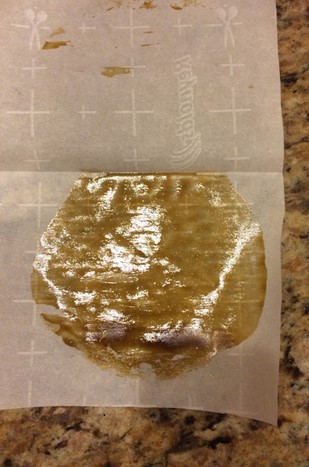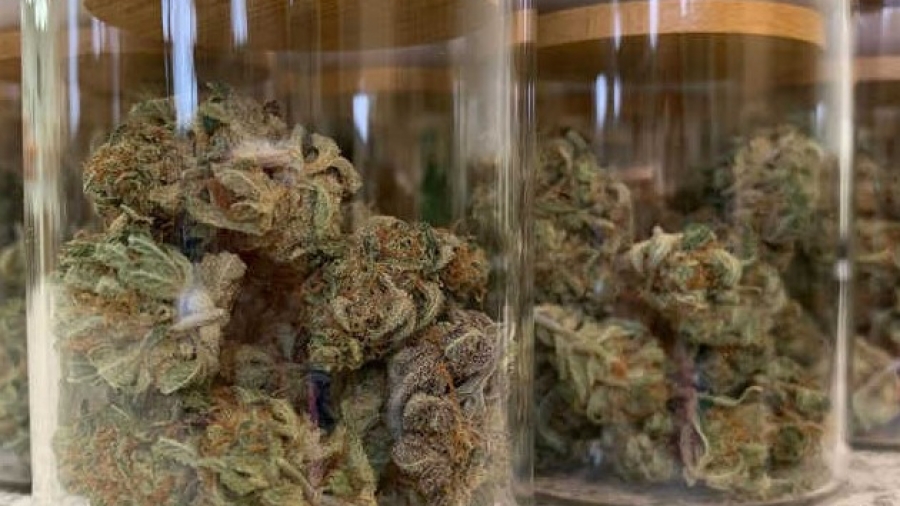Rosin is becoming the choice for consuming concentrates among a growing number of the country’s cannabis communities. And as we’ve detailed in past articles, all rosin yields are not equal. A subpar return can come from several options. Of course having top quality equipment, such as the Pikes Peak rosin press, can make a huge difference, if you want to hit big yield numbers with flower rosin you have to select the right strains.
Choose the BEST Materials
In the world of making rosin, the quality and freshness of the plant material you start with is one of the greatest factors in the quality of your final rosin. It’s always good to remember that if you put high-quality materials into your press, you’re much more likely to get high-quality rosin out. But there’s no way to produce high-quality rosin from low quality plant material or junk flower, no matter how precise your process or how expensive your press.

This doesn’t mean that you have to go out and buy the most expensive, high-grade flower or plant material you can find, but use the best you can get within your budget because quality of input is the greatest determiner to quality of output.
Quality is also affected by the freshness of your source material. Most often, you’ll get the best results from flower that’s pressed as soon after it’s dried and cured as possible. The longer you wait, the darker your rosin will be, so always try to press flower when it’s as fresh as possible.
How well the plants were cared for during their growth and flowering cycles can have more of an impact on the final rosin product than the growing medium used. Many rosin producers report that there doesn’t seem to be a discernable difference in flower rosin that came from plants grown in soil, hydro, or coco, but some strains and plant varieties tend to produce flowers more readily pressed into high-yield rosin than others. Remember that genetics play an important role in this process, so use strains that are known for their potency to get more beautiful yellow rosin seeping down onto your parchment paper.
Quality In, Quality Out
The quality of rosin you collect is determined primarily by the quality of the flower you’re pressing. Given that your press is dialed-in, any shortcomings in your rosin can most likely be traced back to shortcomings in your flower. The importance of excellent material can’t be understated if your goal is truly connoisseur rosin. In essence, if you want to improve the quality of your rosin, look first to improve the quality of your material.
Also keep in mind that quality and freshness tend to be interconnected. Aim to press your material just after the flowers have been dried and cured properly. Longer cures and excessive dryness can lead to darker results at the press.
How well the plants were cared for during growth and flowering has more of an impact on your final product than the growing medium used. There doesn’t seem to be any difference in flower rosin from soil, hydro, or coco, however some strains tend to produce flowers more readily pressed into high-yield rosin than others.
You can read about some of the best strains for pressing rosin here.
Expect chunky indicas and robust hybrids to yield more than the airy sativas. The resin production on the flowers determines the yields at the press, and don’t forget that genetics play a critical role. Using strains that are known for their potency and production will ultimately lead to more rosin dripping onto your parchment paper.
Master the Microns
Using filter bags is standard practice for most seasoned extractors.While bags aren’t absolutely necessary to press flower rosin, they are the best way to prevent tiny pieces of plant material from getting mixed in with your final product. However it’s not enough to keep one micron screen size for all purposes. The goal is to maximize both quality and quality in parallel, and properly selecting the correct micron for the job is crucial.
90 microns is the lowest micron width we recommend for pressing flower. Less than that and you start losing out on yields for only negligible increases in quality. For flower, 90 microns is an excellent choice when optimizing for quality despite some loss to your yields.
120-160 microns is the largest size rosin bags for flower rosin, as above the this size of filter screen you’re sacrificing purity and overall quality of the final product as unwanted material is forced through the screen.
90-120 microns gives you a good balance between yield and quality, for the times you want to optimize the total output from your material.
The material of the rosin bags is a key consideration, as various materials perform differently with exposure to heat and pressure. Additionally, the way a specific micron performs in the press is dependent on material, since higher micron counts allow more material to pass through.
Stainless steel can hack into your yields and silk has too much stretch to be able to effectively track pressure. The ideal material is 100% Food Grade Nylon [link] for your bags, regardless of micron width.
You’ll want to focus on strains that offer massive trichome production. Another key to pressing quality rosin is how resinous your plants are in general. Remember, the more resinous it is, the more rosin you’ll yield. While indica and hybrids tend to be the best choice, some sativas are worth pressing as well. Here are a few of each that you should consider making into rosin:
GG4 (a/k/a Gorilla Glue #4)
GG4 is an incredibly popular strain for cannabis users of all ingestion methods. Formerly officially known as Gorilla Glue #4, this hybrid flower is not only the most popular of its phenotypes, but it’s also one of the most in-demand strains in the U.S. market. It now takes on the moniker “GG4” due to a lawsuit, settled out of court, by the official manufacturers of Gorilla Glue brand adhesives. Many rosin pressers love its high potency and copious trichomes that make its flower look covered in permafrost. With a high THC content, this may not be the best dab to end a night since many varieties can be stimulating, but it does tend to be suitable for any other occasion.
Depending who you ask, GG4’s terpenes can be robust and distinguishable. Others say it is a more muted strain. If you’re unsure where you stand and want a robust, aromatic profile, consider starting with another suggestion from the list.
The White and its Crossed Strains
An indica dominant hybrid, The White is not part of the White Widow family but instead named for the color of its buds. The origin of The White’s name is the prime reason why rosin pressers love this strain. Its abundant, plentiful trichomes are perfect for pressing rivers of rosin.
The White’s beginnings are slightly unclear. However, what isn’t is its potency. Users are sure to enjoy the almost immediate impact of a White hit. Those looking for quick, lasting pain relief should consider this strain for pressing. However, its terpene profile isn’t its strongest trait. As mentioned with GG4, if you’re looking for a yield with noticeable terpenes, this strain might not be your top choice. If that is your preference, other OGs might fit your wants a bit more.
To learn more about the White, GG4 and other crosses, check out the awesome work by Nikka T of Essential Extracts.
The Chem Lineage
With Chems, choosing one above the others wouldn’t be fair. So, we’ll recommend the whole slew and let you decide from there. Chem Dawg has been at the cannabis for almost the entire 25+ years it’s been cultivated. While uncertain in origin, cannabis lovers are sure of this slightly indica dominant hybrid’s THC content (15%-20%+) and its silvery trichomes.
It’s no wonder that a strain like this would be crossbred multiple times over. The ensuing results produced other excellent strains for rosin pressing. Others worthy of pressing include:
- Chemdawg #4
- Chem Valley Kush
- Chem Willie
- Chem’s Sister
- Chemdawg Sour Diesel
Because of these traits, even veteran users tread lightly when using Chemdawg and its offshoot strains. That being said, the results are worth it all.
Papaya and its Crosses
Papaya is a potent strain known for its disease resistance and early maturation. It’s also beloved for being a powerful indica dominant hybrid that’s excellent for cross breeding. The top crossbred strains are worthy candidates for water processed hash — with some of the best washes and rosin coming from Kennnwall, along with many amazing crosses originating from Oni Seed Co.
Papaya fans cite its rich terpenes that fill the nose with fruit, mainly mango. Additional benefits of Papaya and many of its crosses include quick and long-lasting effects that typically bring joy while keeping a certain level of focus.
Sour Strains
Choosing a sour is much like Papaya strains. You can make a lot of great decisions. An additional benefit of sours are that you can choose a sativa dominant hybrid and still produce quality rosin. With these strains, you can opt for a 50:50 split or go for an indica or sativa dominant strain.
Start with a 50:50 like Sour Banana Sherbert for an 18%-24% potency and exciting terpene profile that straddles sour fruit and diesel. Sour Tangie works excellent if you want more sativa and prominent terpenes. The same can be said for the incredibly resinous Sour Kosher.
Also consider:
- Sour Kush (Sativa dominant NYCD cross)
- Sour Secret (80:20 indica dominant)
- Sour Cream (For a stellar sour/haze combination)
- Sour Krypt (For large, resinous buds)
Did we miss your favorite strain? It’s possible with so many great options for rosin pressing! Tell us your favorite strains in the comments to keep the discussion going.
We love the ability that high quality flowers give us to create a rosin that preserves valuable terpene content while creating a truly unique expression of the cannabis plant.
As the knowledge that our community collectively holds continues to expand and accelerate, we’re excited by the constant experimentation and innovation that occurs. If something from your experience would lend itself to the tips and tricks above, we’d love to hear from you in the comments.

This is what I am looking for! I have a press I ordered in Canada coming soon and I am trying to do my homework get info from people that actually do this and know the how’s and why’s. Thanks for this article!